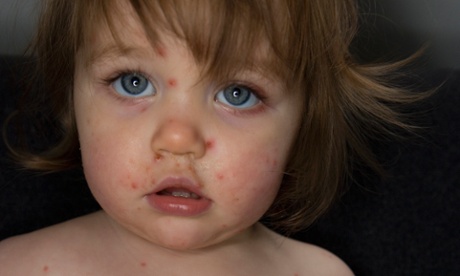
When you think about chickenpox, chances are you remember your own childhood bout – the rash, the itching, the discomfort, all smoothed over by a hazy glow of calamine-scented nostalgia. Almost a rite of passage, this disease is little feared and seemingly trivial in the grand scheme of things that could go wrong in childhood.
Isn’t it?
I am not convinced. Varicella zoster, the herpes virus that causes this illness, is an insidious and malicious entity. First of all, in the cold light of day, the routine illness itself is no picnic. Along with flu-like symptoms, most afflicted children will be covered from head to toe in up to 500 blisters described rather blandly by the NHS as “intensely itchy”. (A parent I know whose child has suffered through it recently describes it as a “horrendous” experience.) The rash manifests in waves over a week or more, and some parents report permanent scarring. Further complications are rare in children, but do include some worrying scenarios such as bacterial infection of the blisters by group A strep, the so-called “flesh-eater”.
Chickenpox is much more serious when caught by previously unexposed adults, when it can lead to pneumonia, or the immunocompromised, who can develop septicaemia or meningitis. During pregnancy, chickenpox can spell disaster for the unborn or neonatal infant. And then, of course, there is shingles. Like all herpes viruses, such as the one that causes cold sores, varicella never truly goes away, but lurks dormant in the nervous system until some future reactivation event – often decades in the future. I am told it is no exaggeration that the pain of shingles can be agonising, like being attacked with a hot poker, and it can go on for weeks – and in a subset of patients, for reasons that remain obscure to science, years. It can also lead to eye scarring and loss of vision.
Perhaps not as important, but worth noting nonetheless, chickenpox represents a hefty economic burden. Banned from childcare during the long course of the contagious window of chickenpox, a parent has to take up to a week or more off work to look after their afflicted kids at home.
Wouldn’t it be great if there was a simple way to avoid all this misery?
In fact, there is. There has been a safe and effective vaccine against varicella zoster since 1988, and it has been part of routine childhood vaccinations in the United States since 1995, now included in their routine MMR course (as a cocktail called MMRV). The World Health Organization even includes the varicella vaccine on its list of essential medicines.
So why don’t the Brits follow suit? Studies have estimated that the cost of the vaccine would be offset hands down by the income recovered by parents no longer having to miss a week of work. Such economics don’t easily transfer, of course. What about the human cost? Surely that should be enough to warrant a change in tune?
No, there is something else afoot – and the key is shingles. The NHS freely admits that administering a vaccine might deprive the population of a convenient source of herd immunity – namely, infected children, giving adults a handy ‘boost’ during the throes of misery.
I think this is wrong on several levels. First of all, sick children should not be exploited as living vaccines for older people when there is a perfectly serviceable jab on the market – especially as the evidence that they really do stimulate a protective response against older people's shingles is not very robust. The NHS also worries that if a mass vaccination programme eliminates the majority of cases, a few children will slip through the net, remain unvaccinated and develop worse cases as adults. But this is not an argument used with other vaccines (the majority of which target diseases – including measles, mumps and rubella – that are more serious in adults than children). And these fears appear to be unfounded: although it is complicated and difficult to examine, recent studies of the US population suggest that vaccination has not in fact caused the incidence of shingles to rise.
Second, there are actually many adults who do not have regular contact with children – how are they going to avoid shingles? Third, there are antiviral drugs that work against shingles, if administered in a timely fashion. The humane, and fair, answer is: vaccinate everyone, and repeat the vaccine as necessary, just as we do for other immunities requiring occasional boosters (such as tetanus). And be more vigilant about diagnosing shingles and administering drugs early to lessen its effects for the people in whom the vaccinations were not sufficient.
There is in fact another more dispiriting reason put forth why we don’t follow the Yanks and offer an MMRV vaccine: the long shadow of Andrew Wakefield's misinformation about the safety of MMR still looms large in parents unable, or unwilling, to process the fact that the autism link does not exist. How can we convince parents to subject their kids to a fourth addition to MMR when they don’t even seem interested in protecting their children against something deadly like measles? Easier, perhaps, to throw up your hands and proclaim it to be too difficult.
So here we are, in 2014. Informed parents, like me, can opt to go private and give their children the varicella jab at 12 months. People who don’t know about the vaccine, or can’t afford it, will go without. We deserve better information, and better care.
Jenny Rohn runs a lab at University College London studying the cell biology of infection. She can be found on Twitter as @JennyRohn

